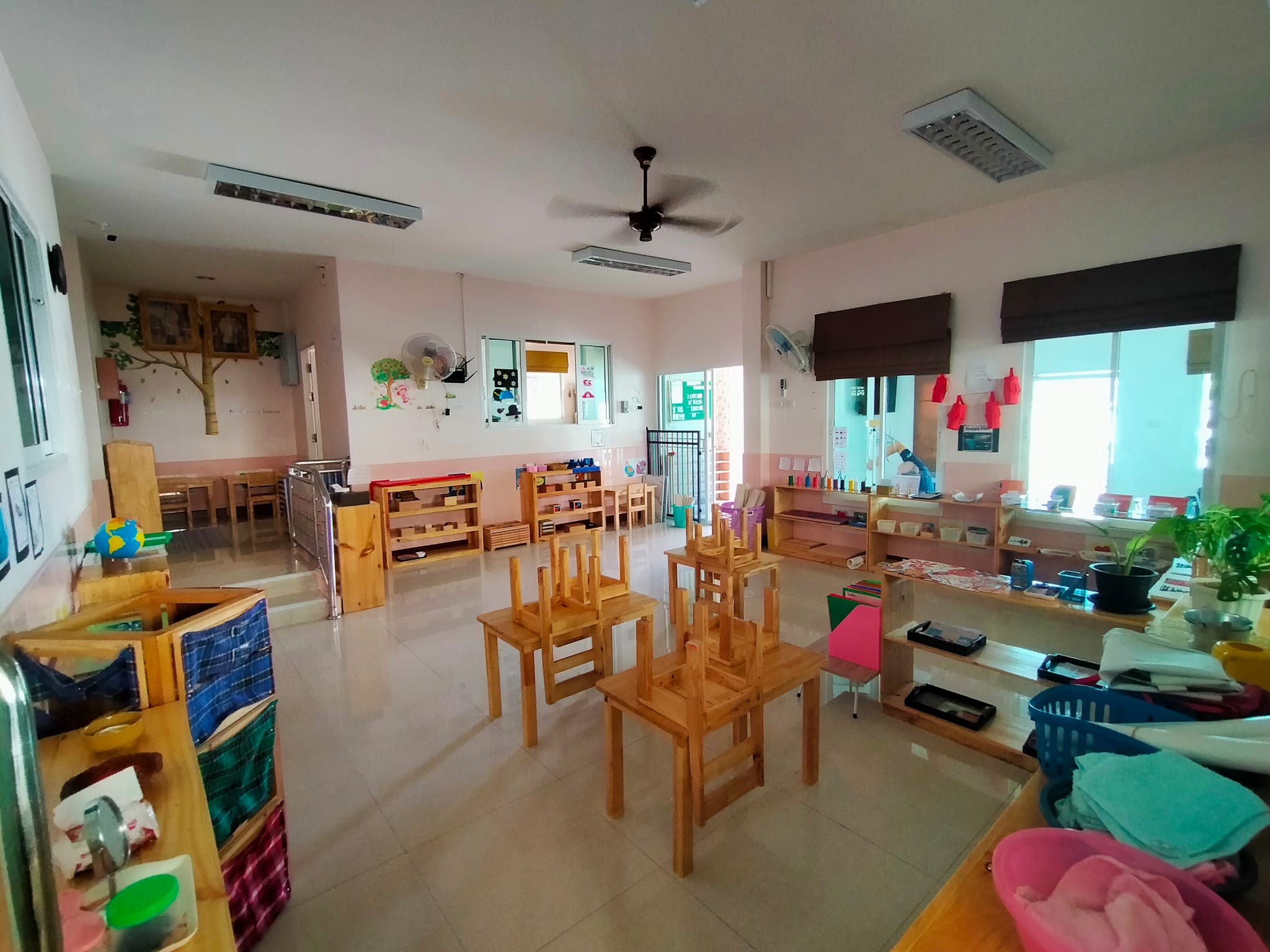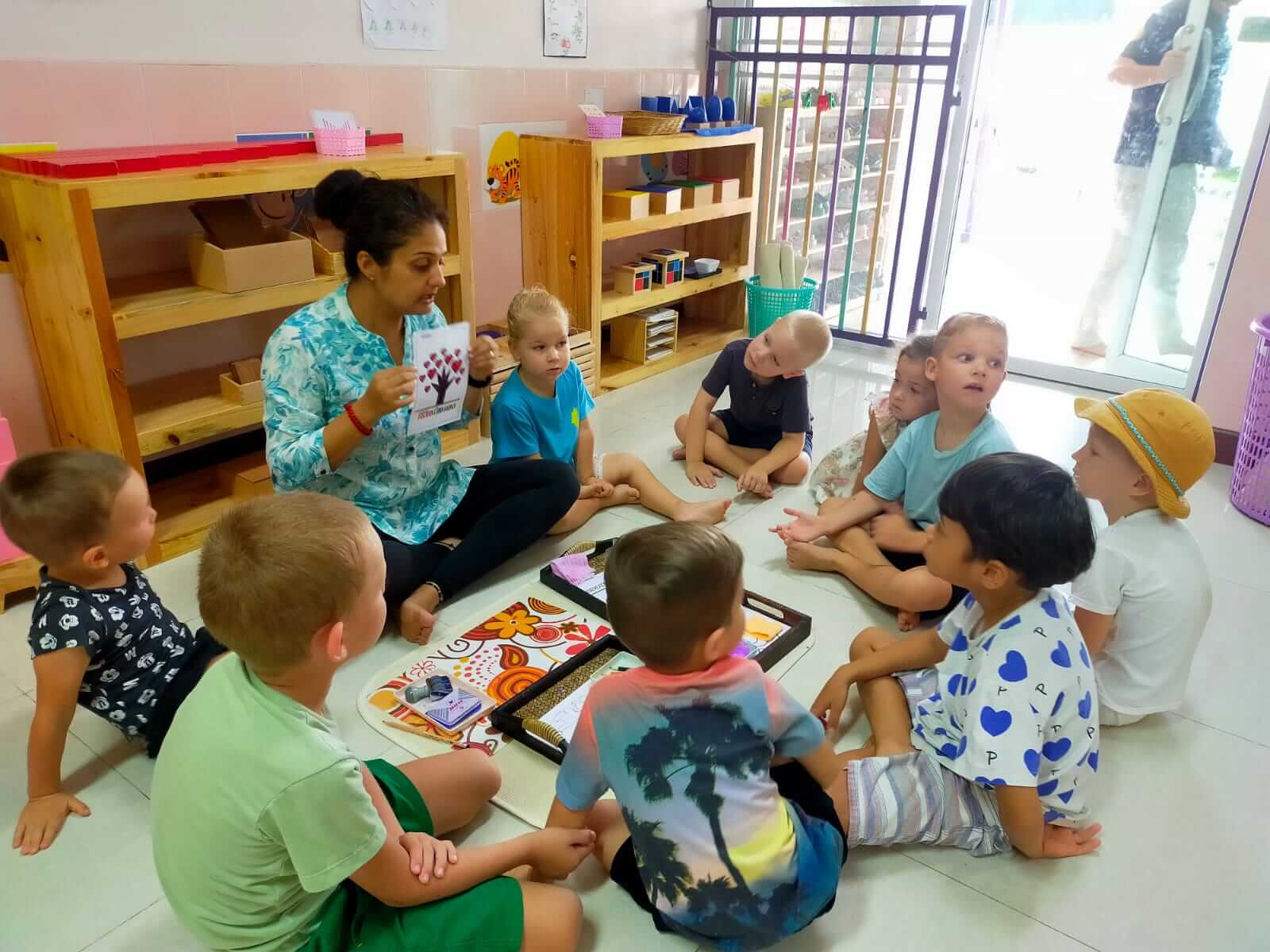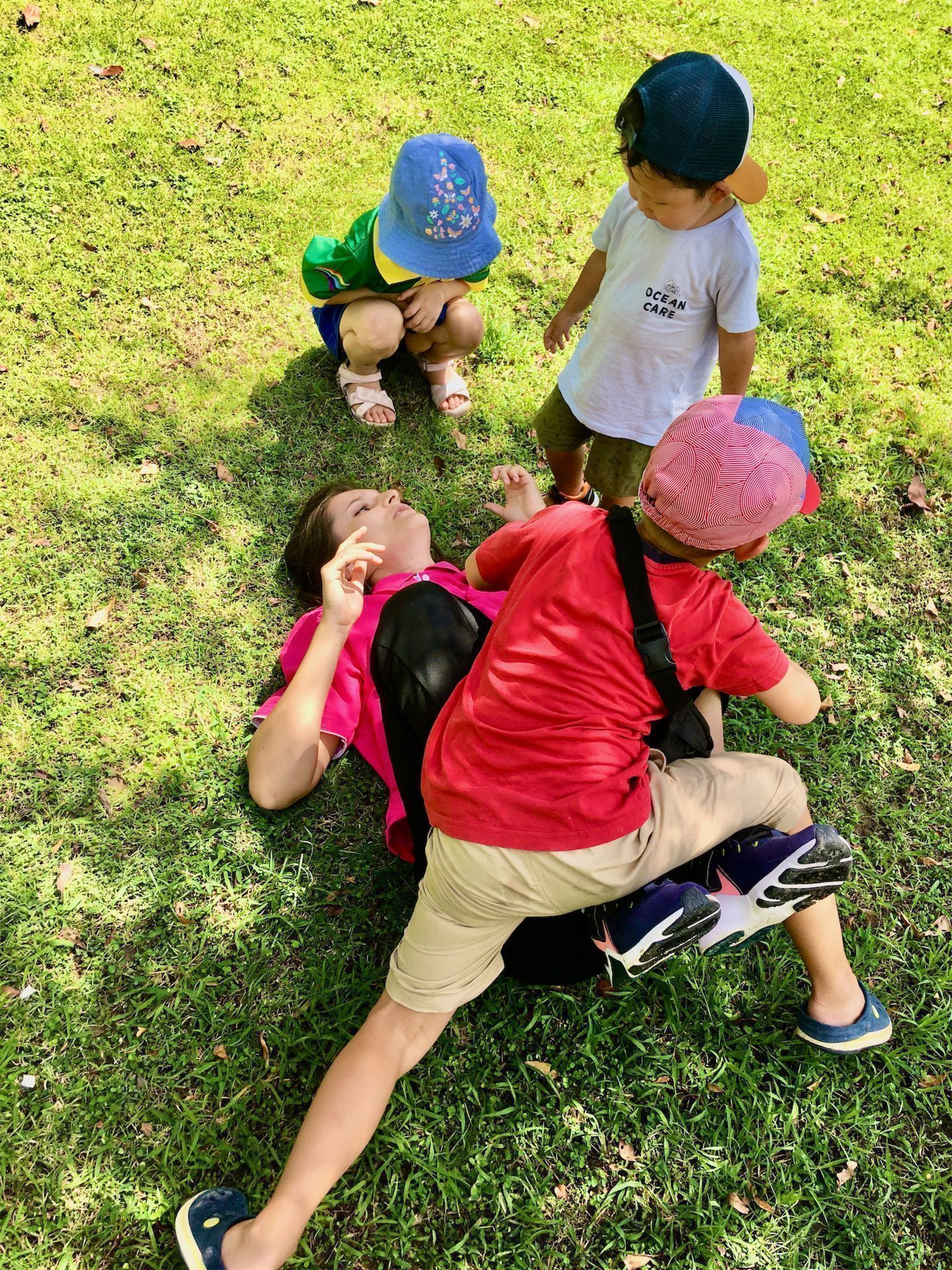
3 - 6 Years
The Montessori Curriculum offers children five key areas of study: Practical Life, Sensorial, Mathematics, Language, and Culture. Each learning area is made up of a set of Montessori materials that each teach one key knowledge area or skill. Through repetition and practice, children develop a foundational understanding of each material, and master the core competencies within each curriculum area.

Curriculum
The Australian Montessori National Curriculum is available online for everybody and Rainbow Montessori Kindergarten Phuket is following the
Early Years Learning Program: Three to Six Years prepares all students for the future.

Montessori Trained
Rainbow Montessori Kindergarten Phuket Educators create a prepared environment that nourishes the love of learning and that encourages children to discover the new world. Contact our trained Montessori teacher. Interested in getting trained? Get in touch with …
The Montessori Curriculum
Rainbow Montessori Kindergarten, Phuket, is an international early learning Pre-School for ages 1 to 6. This is a great opportunity to immerse your children into the English language at an early age, giving them the greatest opportunity for later in life. Montessori is a method of education that is based on self-directed activity, hands-on learning, and collaborative play. In Montessori classrooms, children make creative choices in their learning, while the classroom and the trained teachers offer age-appropriate activities to guide the process. The education in our kindergarten is primarily in English, however, there are Thai lessons within the curriculum.
The 3-6 Curriculum
Rainbow Montessori Kindergarten Phuket follows the Australian Montessori National Curriculum. The
Early Years Learning Program: Three to Six Years prepares all students for the future.
The scope and sequence of the Montessori Children’s House curriculum are embodied in the sets of materials displayed on open shelves at the children’s level in the Children’s House and in the sequence in which these materials are typically presented to the children. The resources and activities in the Children’s House are organized into four main areas:
- the exercises of practical life
- the exercises of the senses
- language
- mathematics.
Also incorporated into these areas are resources and activities that introduce children to visual arts, music, physical education, science, geography, and history.
Click: Visit our Kinderhaus Gallery
Curriculum
Reading/Writing
Children in a Montessori environment learn to write first, before they learn to read.
This approach is organic, as children are able to put the letters for the sounds they know together into a word before they are ready to interpret and string together the sounds of a word on a page.
Math/Science
The Montessori Math includes the development of concepts such as numeration, place value, fractions, and the basic operations of addition, subtraction, multiplication, and division using numbers up to 9999.
Maria Montessori believed that people are naturally inclined to create order, to organize, to observe relationships and quantify patterns. With the proper guidance and nurturing, everyone can develop the ability to reason and to calculate.
Art
Art is one of the many ways children express themselves. Art is a way for children to communicate their feelings. It is through art that children develop their fine motor skills. In the Montessori environment, we provide open-ended art activities that help children explore and use their creativity.
"If we try to think back to the dim and distant past... what is it that helps us reconstruct those times, and to picture the lives of those who lived in them? It is their art... It is thanks to the hand, the companion of the mind, that civilization has arisen."
—Maria Montessori, The Absorbent Mind
Critical Thinking
The Montessori environment promotes problem-solving and critical thinking skills in a variety of ways. With each piece of material that is presented to the child, there are problem-solving skills that are required to master the work.
Within each material, there is an underlying problem-solving skill also known as the control of error. The control of error is the point when a child acknowledges the fact they have done something wrong when working with the materials. They then must go back, deconstruct the work, and see where they made a mistake. This control of error allows for problem-solving skills and critical thinking skills to work together as a whole.

Frequent Asked Questions
What is Montessori pedagogy?
Montessori pedagogy is an educational concept developed by Maria Montessori from 1907, which includes the development space from small children to young adults. It is based on the image of the child as the “master builder of himself” and therefore uses the form of free work. There is no ready-made plan. The observation of the child by the educators means that each child is offered the right materials and activities for the respective development step at the right time in order to optimally support the development process. The basic idea of Montessori pedagogy is: “Help me to do it myself. Help me to think it myself. Help me to be myself.”
Who is Montessori Education for?
Montessori pedagogy is aimed at all children and parents for whom it is important that their child is individually encouraged and challenged in the learning process at their own pace. It is for parents who want their child to be accompanied by attentive and committed teachers.
What is the "House of the Children"?
Maria Montessori coined the term “Casa dei Bambini”, i.e. “House of the Children”. Here it includes all areas for 1-6 year old children and is divided into two areas: In the “Children’s House” the 3-6 year old children move around, in the “Toddler Community” there are children from 1-3 years old.
Do parents have to have knowledge of Montessori pedagogy?
We really appreciate it when parents get to grips with the basic principles of Montessori pedagogy, trustingly accompany their children on their way and thus support their development. You can gather impressions and information about the work in our institution at open house days or information meetings. In addition, there is the possibility of observing with us. A job shadowing always includes a follow-up discussion in which you can ask your questions.
What is the Prepared Environment?
One of the main tasks of the adults in the children’s home is to create the Prepared Environment. The aim is to design the premises in such a way that the children can move around as independently as possible and cope with their everyday life. This also means that the furniture and objects that the children work with are appropriately sized. The rooms are designed in such a way that the children feel comfortable and that orientation is easy for them. The material is offered on open shelves and everything has its place. The material offered offers the child the opportunity to deal with various areas of development (e.g. exercises in everyday life, training of the senses, language, mathematics).
How are the rooms equipped?
All the materials that encourage the child to work independently are available in the rooms of the children’s house. The so-called “Prepared Environment” offers working materials developed primarily by Maria Montessori. They enable the children to literally “grasp” abstract learning objects. Another focus of the prepared environment is the exercises of everyday life, with the help of which the children can practice everyday activities and ultimately carry them out themselves.
What Our Families are Saying


